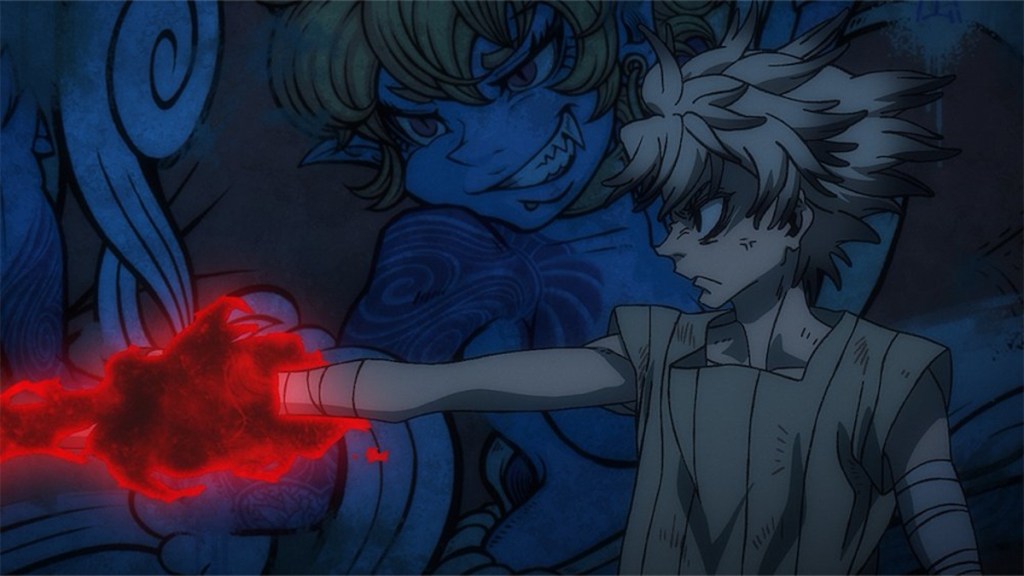Whether it’s the Devil Fruit and haki-based One Piece series or the chakra-based Naruto, the power system is the narrative hook that captivates the attention of the shonen fans. Gachiakuta, one of the new-gen shonen manga titles by Kei Urana, has become the talk of the anime town lately, thanks to its well-crafted power system. If you are new to the Gachiakuta-verse, let me break down its power system and explain why it’s undoubtedly one of the best you will ever find in a shonen title. Below, we have described the Gachiakuta’s power system in detail.
Spoilers Warning:
This article contains spoilers about the power system of Gachiakuta. Proceed with caution.
The Anima-based Power System of Gachiakuta
No matter what battle shonen manga you pick up, the power system will always be the number one fascinating aspect of the series. Gachiakuta features a thought-provoking power system that may seem complex at first, but as you begin to grasp the basics, the picture becomes much clearer. So let me introduce you to the fundamentals of Gachiakuta’s anima-based power system.
Thought

If you are familiar with popular shonen titles, you must be aware of the spiritual energy that is the source of power for the characters of the respective series. The spiritual energy comes in different forms in various anime, such as Haki in One Piece, Chakra in Naruto, Nen in HxH, etc. Now, Kei Urana added her spin to the spiritual energy trope by allowing her characters to imbue objects around them with souls.
Similar to how thoughts and dreams manifested as Devil Fruits in One Piece, all the thoughts in the ground (or the pit) transform into anima, a vital energy that gives rise to mysterious phenomena in the world of Gachiakuta. This energy can be utilized in many ways; however, when the Spherite people continued to dump their garbage in the pit, the anima, aka energies, of the trash led to the birth of trash-born beasts in the wasteland.
Vital Instruments

Now that you have learned about anima and thoughts, it’s time to learn about how thoughts are powerful and can be utilized by the inhabitants of the wasteland. Interestingly, when a person invests care and attention into their cherished possession, they can imbue it with the anima (or thought) to turn it into a powerful weapon. These transformed weapons are known as ‘Vital Instruments or Jinki in Japanese.
If you treat something with care for long enough, it’s imbued with a soul – Regto
The Vital Instruments are the key tools in defeating trash monsters, as regular weapons won’t work against beasts born through thoughts. Thus, throughout the series, you will see different ordinary objects transformed into deadly weapons with the power of thought. For example, Rudo uses his gloves, Enjin his umbrella, Zanka his walking stick, Riyo her scissors, etc.
Givers

The people who are capable of creating and utilizing the Vital Instruments are known as ‘Givers.’ Thus, every giver has turned their prized possession into a lethal, vital instrument. Each giver is also capable of harnessing their vital instrument’s power and skilfully wielding it in battles. As you can see, every giver can turn only one of their valued item into a vital instrument. Therefore, let’s say if anyone steals your special jinki, it becomes a useless tool in another’s hands.
That’s what happened when Rudo snatched Zanko’s stick to get his money back from the cat. However, as the protagonist of the series, Rudo is an anomaly in this power system, as he was seen turning any object he picks up into an extraordinary, vital instrument.
The world of Gachiakuta, especially the pit, is shaped by the anima-based powersystem. When the spiritual energy trope was recycled in all the new-gen titles, Kei Urana introduced a distinctive power system that stands apart from everyone else. That said, what do you think about the power system of Gachiakuta? Let us know in the comments below.






